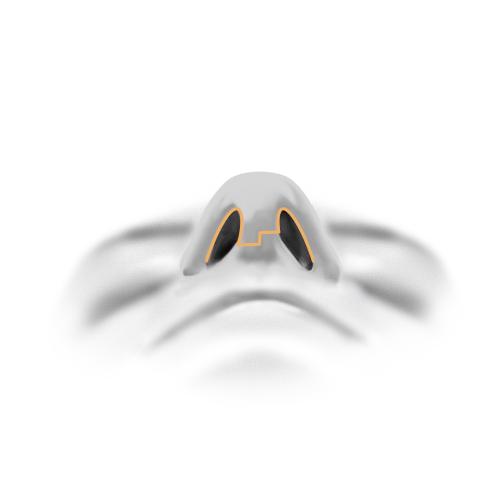How is a nose surgery procedure performed?
After numbing the area, your aesthetic plastic surgeon will make incisions to access the bones and cartilage that support the nose.
By adding or removing bone and cartilage and adjusting the supporting structures inside the nose, your aesthetic plastic surgeon can reduce or increase the size of your nose and shorten or lengthen it.
- Tip grafts made of cartilage can be used to remodel the tip of your nose, making it more lifted, longer, shorter, or thinner.
- Your skin and other soft tissues will remodel to assume the shape of the underlying structure.
- In some patients, tissue fillers or fat grafts can be added to increase volume in desired areas.
What are my nose surgery options?
There are two main incision approaches: the open approach and the internal (endonasal) approach. See Incisions and Scars

With an open approach, the surgeon makes incisions outside the nose, adjusting cartilage and bone to improve the shape of the nose. The nasal bridge can be narrowed by moving the bone inward.

With an internal approach, the surgeon makes incisions inside the nasal passages. Because these incisions are hidden, they are invisible after surgery.
What else do I need to know about nose surgery?
In addition to incision options, there are various methods for augmenting your nose or smoothing surface deformities.
- Autologous cartilage grafts taken from your nasal septum (the wall inside the nose that divides one air passage from the other) offers the best chance for a natural result. If there is no cartilage or bone available, then your surgeon may use ear or rib cartilage or sometimes bone from the skull instead.
- Solid silicone implants are available for nasal surgery, but these are foreign materials that may become infected or react poorly with your nasal tissues and have to be removed. The ideal option is to use your natural cartilage.
- Your surgeon may inject fillers or fat grafts to smooth your nose, camouflage deformities or indentations, or add volume in desired areas.



